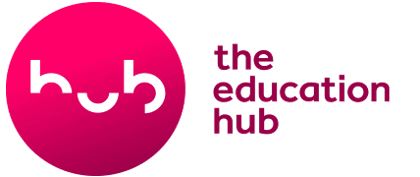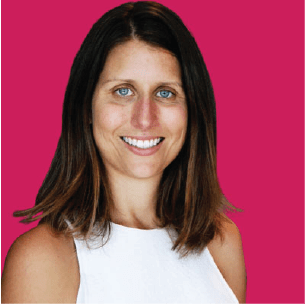Notice: Trying to get property 'ID' of non-object in /var/www/theeducationhub.org.nz/wp-content/plugins/sfwd-lms/themes/ld30/templates/topic.php on line 80
In the last part of this module, we focus on assessment practices in early childhood education, looking at some broad principles for early childhood assessment and the practices that support these principles. In the next module we will explore in more depth one possible approach to early childhood assessment – the learning story. Again, you will find readings, videos and opportunities for reflection, as well as a chance to relate your learning to practice.
This week, we aim to help you:
This will involve:
Revisit your learning so far
What are some of the actions an intentional teacher might take to further children’s learning, and why are these important?
Read
Read ‘What is assessment in early childhood education?’ and think about the potential links between assessment in early childhood education and the practice of intentional teaching.
What is assessment in early childhood education?
Assessment can be defined as ‘the ways in which, in our everyday practice, we observe children’s learning, strive to understand it, and then put our understanding to good use’ (Drummond, 1993, p. 13). Assessment in early childhood education (ECE) plays an important role in supporting positive outcomes for children by informing what is taught and how. Research shows that ECE that uses effective and appropriate assessment is an important contributing factor to children’s success in future learning and education.
Assessment in ECE serves multiple purposes, including:
Usually assessment should be formative – used to influence learning in the immediate future. However, summative accounts – informing children, families and others about children’s learning and progress over time – can be useful for transition processes.
Formative assessment can be formal or informal. Informal assessment occurs in the moment as teachers observe, listen and participate in experiences with children. It informs teachers’ responses, in terms of their actions or changes, and helps children reach immediate and long-term goals. Formal assessment involves recording observations for further analysis and reflection, as well as to create a record over time. It enables teachers to identify changes in children’s interests and capabilities, and consider longer-term plans and strategies to support these. Both formal and informal observations and assessments are used to plan programmes and activities that allow children to develop their interests in a child-initiated context.
Kei Tua o te Pae and Te Whatu Pōkeka are assessment frameworks consistent with the ECE curriculum document Te Whāriki.
Principles for assessment in early childhood
Te Whāriki offers clarification on the purposes and strategies for assessment in early childhood. It recommends a strong focus on formative feedback, as well as alignment with the four principles that underpin the curriculum document. This means assessment should:
1. Enhance the mana of the child, and the child’s sense of him or herself as a capable person and competent learner (Empowerment / Whakamana principle)
This means teachers need to recognise children’s individual strengths and abilities, and notice and respond to their initiatives.
2. Take account of the whole child and reflect the holistic way in which children learn, based on the context of children’s activities and relationships (Holistic development / Kotahitanga principle)
This means teachers need to draw on their wide knowledge of each child when interpreting, and invite families to contribute knowledge of children’s capabilities at home and in other settings. As learning is influenced by the environment and by relationships between children and teachers, these should be recognised.
3. Include families and whānau (Family and Community / Whānau Tangata principle)
Assessment should be a social practice where teachers, children, parents and whānau engage together in assessment and the planning based on it. Te Whāriki suggests that assessment takes place within a learning community that co-analyses children’s activity, and co-constructs goals. Rather than the one-way relations in which teachers report progress and learning to families and children, this involves the sharing of power to make assessment and planning decisions.
4. Recognise the people, places and things that support children’s learning (Relationships / Ngā Hohonga principle)
This means children’s learning should be assessed in context, and assessment documentation should reflect the social contexts in which children are learning. It will involve giving meaningful descriptions of the environment and the people and objects in it that influence learning, as well as taking account of the children’s cultural contexts.
The socially constructed nature of learning and assessment
ECE teachers play an important role in documenting children’s knowledge and activity in photos, recordings, and written accounts which can then be analysed, scrutinised and reflected upon. This means that ‘epistemically responsible assessment’ (where teachers carefully consider why they choose to assess what they do, how they make judgements, how they know, and what they do with what they know) is important. Teachers should recognise their personal contexts, histories and cultures that influence their interpretations of, and plans for, learning, and be open to alternative perspectives and vocabularies for describing learning that might open up their thinking around children’s learning, rather than attempt to provide a singular and objective truth about their capabilities.
Multiple interpretations of children’s learning can also better reflect the way in which the development of capabilities in early childhood is often unpredictable and fluctuating, and entwined with children’s social contexts and relationships.
Reflect
Reflect on the following question and write a personal response:
How confident do you feel to enact the principles of Te Whāriki, (Empowerment/ Whakamana, Holistic development / Kotahitanga, Family and Community / Whānau Tangata, or Relationships / Ngā Hohonga) in your assessment documentation? For example, how confident are you that your current assessment practice:
Read
Continue reading from the ‘What is assessment in early childhood education?’ resource, with this short section on ‘what to assess’. Think about how what is assessed depends on the aims and aspirations of teachers and parents as you read.
What to assess
In early childhood, progress in learning develops when attention is paid to children’s strengths, interests and dispositions. The aim is to use assessment to recognise and build upon existing behaviours in a wider and deeper range of contexts. This means focusing on children’s developing knowledge, skills, attitudes and dispositions as related to Te Whāriki’s strands and learning outcomes, with a particular focus on positive learning dispositions such as courage, curiosity, trust, playfulness, perseverance, confidence and responsibility. Dispositions are considered very important for early childhood learning skills. Dispositions describe being ready and willing to learn. For example, there is a big difference between being able to read and being disposed to read (being ready and willing and having the disposition to be a reader). Positive learning dispositions are essential to the cultivation of effective learning skills.
Also important are the dispositional behaviours that children display for approaching learning; for example: taking an interest, being involved, persisting with difficulty and uncertainty, taking risks, asking for help, expressing a point of view or sharing knowledge. The acquisition of skills and knowledge provide the context for practising the deeper learning associated with dispositions. As children approach transition to school, a greater emphasis on literacy and mathematical concepts, and self-management skills can be useful.
Remember that what is assessed reflects what is valued, by teachers, families, and learners themselves.
The full resource “What is assessment in early childhood education?” can be accessed here, and is available to you at any time.
Relate your learning to practice
Think about your local curriculum, or the curriculum goals and strands that you, your early childhood setting, whānau and community value most for the children you serve, so you can begin to determine what to assess in your context. Find a colleague (someone whom you can trust and who you think will both challenge and support your thinking would be ideal), and use the questions below as the basis for a reflective conversation. To support your conversation, it might be helpful to print out the questions.
Watch a video
Sue Cherrington discusses a range of different kinds of assessment and their link to learning
Sue refers to a range of assessment techniques that might be useful to teachers. You are probably well aware of the possibilities of video recording (even if you hadn’t previously considered having children wear a GoPro camera). Sue also suggests traditional observation techniques might be helpful. By “traditional”, she is referring to techniques such as running records (where you write a list of everything the child says and does in a 5 or 10-minute period) or time sampling (where you write down where the child is playing and with what, at 10-minute intervals across a morning or afternoon).
Reflect
What kinds of assessment formats do you use in your centre? What do you think the advantages and disadvantages of these formats are?
Further reading
Read this general overview of the principles underpinning assessment in New Zealand’s education systems by Associate Professor Alison Gilmore, who introduces the idea of New Zealand’s education system as an ‘education system that learns’.
For a more practical example of how one centre operationalises their local curriculum in accordance with their identified values and desired learning outcomes, see here and here.
Also read the guide to assessment in Te Whāriki, pp. 63-4. If you’re not familiar with New Zealand’s early childhood curriculum, see our guide here.


